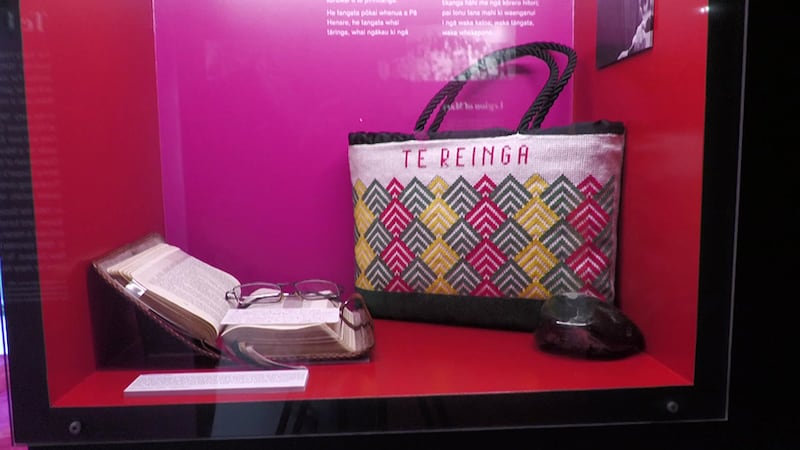A hapū-owned and operated two-story museum has been opened in the rural community of Motutī in North Hokianga. It houses some rare Catholic and Māori artefacts and organisers say the aim is to make these treasures widely accessible to whānau and the wider community.
The museum is located in the North Hokianga settlement of Motutī, an hour's drive southwest of Kaitaia. Motutī Marae was packed with whānau and officials who braved the dark and cold morning on Saturday to witness the historic opening.
Some of the artefacts are local tāonga including a 450-year-old adze retrieved from an ancient pā site behind the marae. Other artefacts include kete and whāriki from here and across the Pacific. It is a treasure trove filled with items from the Catholic faith such as chalices, vestments and an array of ornaments. It features an extensive photo collection of local events and a series of manuscripts written by ancestors of the area.
Organiser Geremy Hema says the museum demonstrates Hokianga’s long-standing relationship with the Catholic Church and how the church and Te Ao Māori are connected.
“Ngā hitōria o roto mai o Hokianga Whakapau Karakia, o roto i Te Tai Tokerau. He whakaatu i wa tātou tāonga ngā tāonga Māori o te ao kōhatu, ngā tāonga mai i te Moana Nui a Kiwa. He whakaatu hoki i ngā timatanga o te Hāhi Katorika, te whakapono Karaitiana”

"It shows the history of Hokianga and of Northland. It displays our treasures, Māori treasures, artefacts from across the Pacific and displays of treasures of the beginning of the Catholic faith in Aotearoa" he said
Bishop Jean- Baptiste Pompallier made landfall in Hokianga in 1838 and was the first Catholic Bishop in New Zealand. The first Mass was celebrated that year at Tōtara Point. In 2001 a delegation led by the late Pā Hēnare Tate travelled to France in 2002 to retrieve the bishop's remains which are now at the local church, Hata Maria.
The museum was the brainchild of Pā Hēnare who died in 2017. He appointed a small team to help bring the museum to life and, after eight years, the dream became a reality.
In 2019, then Associate Arts, Culture and Heritage Minister Grant Robertson agreed to grant $300,000 to Motutī Marae Trust for the Raiātea Whare Taonga Resource and Archive Centre project.
The project is the first hapū-owned whare taonga funded by the Regional Culture and Heritage Fund since the fund was set up in 2016.
There are over 10,000 artefacts housed in the museum from the Catholic Church and the Māori world. Curator Whina Te Whiu shared her excitement as whānau are now able to see their history being displayed.
“It's a relatively large collection of tāonga Māori such as the toki. There is a lot of Katorika information relating to Māori as well as Aotearoa.”

Geremy Hema says that while some may say the church and Te Ao Māori knowledge systems often collide, the tāonga in the museum are an example of how both can co-exist.
“Ka kite koe i te tuituitanga o aua ao e rua me te kore e tukituki o era ao e rua to tātou ū ki ngā tikanga me ngā kōrero a o tātou tūpuna”
“You get to see the coming together of both worlds. We remain committed to our customs and to the stories of our people,” he said.
The museum not only cares for local treasures but also doubles as a research centre.
“He wāhi wānanga, he wāhi māmā - ngāwari tona wairua kia kore e mataku te hunga ka tomo atu ki a ia ka noho ki roto i a ia ka wānanga ki roto i a ia”
“Its a place of learning. It has an easy vibe to it so that people are not scared to enter, to sit and to learn,” he added
Locals are now gearing up to share their stories with pilgrims and the wider public who want to learn about their stories and histories.

